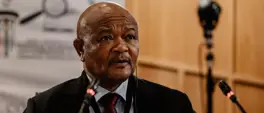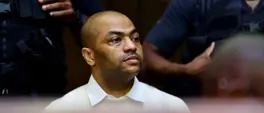JUDITH FEBRUARY & CHRIS OXTOBY | Challenges to the legal system starkly revealed
Judith February & Chris Oxtoby
9 May 2025 | 13:30Chief Justice Mandisa Maya can define her legacy by how she responds to recent concerns raised about about aspects of the governance of the court system and the legal profession, write Judith February & Chris Oxtoby.
Two incidents in recent weeks have raised concerns about aspects of the governance of the court system and the legal profession. They invite questions about both individual and structural leadership, which are crucial to upholding the Constitution and the rule of law.
The Legal Practice Council (LPC)’s disciplinary process against Advocate Dali Mpofu was always going to be a significant moment. As we have highlighted previously, the process provided an opportunity to exercise accountability in a context where the conduct of leading lawyers and the lack of consequences for potential misconduct has frequently been the subject of concern.
By holding to account legal practitioners who have acted in a manner that threatens to undermine the legal system, the fabric of our constitutional system of government is protected.
The saga took a twist, however, when charges relating to Mpofu’s cross-examination of former public protector Thuli Madonsela, and to questions put to the now-Chief Justice Mandisa Maya during a 2022 Judicial Service Commission interview, were dropped. Prior to the hearing, Madonsela had indicated that she had “moved on” and did not wish to be part of the process.
The Chief Justice also indicated that she would not be involved in the complaint and issued a statement containing scathing criticism of the fact that the complaint had been brought without informing her, accusing the LPC and CASAC (a complainant in the matter) of "gross patriarchy cloaked in false chivalry" for "arrogat[ing] upon themselves the right to be offended" on behalf of the Chief Justice and women generally.
This incident is a blow to the LPC and will only serve to heighten concerns that it is unable to exercise its mandate to regulate the conduct of legal practitioners effectively. According to reports, the chairperson of the inquiry stated that the complaints relating to Madonsela and Maya were being withdrawn because the "complainants" were not willing to proceed, despite neither Maya nor Madonsela actually being complainants in the matter.
It may also raise questions about whether, considering her position as the head of the judiciary, Chief Justice Maya ought to have done more to ensure that the complaint could proceed, regardless of how badly it may have been handled, and how personally affronted she may have felt at not being consulted.
A second highly concerning development was the publication of a report by investigative journalists detailing "systematic corruption" at the Mthatha seat of the Eastern Cape High Court. Court officials are alleged to have solicited bribes to perform routine tasks, and as the report notes, "[m]any of these tasks are fundamental to the legal process, and withholding them has the potential to harm people who approach the courts for relief", with the litigants affected often among the poorest and most vulnerable.
At an institutional level, the issue highlights fundamental concerns about the administration and governance of the courts. Reports quote Mthatha lawyers describing the problem as dating back more than two decades and describe anonymous complaints due to a fear of victimisation.
Existing mechanisms for dealing with this kind of issue are clearly not functioning adequately. Part of the problem lies in the unsatisfactory governance structure under which the courts are administered, with responsibilities divided between the Office of the Chief Justice, the Department of Justice, and the Department of Public Works. Longstanding efforts to make the judiciary responsible for court administration have not been successful, a point which long frustrated the previous Chief Justice, Raymond Zondo. Despite strong arguments that such reform is necessary to ensure judicial independence, government has shown little indication that it is willing to make any fundamental change.
The reports of bribery at the Mthatha court describe how the issue was brought to the attention of judges and the Office of the Chief Justice, but note that it is unclear what action has been taken. Considering that it is not immediately apparent where the primary responsibility for dealing with the matter lies, this is not entirely surprising. It would be too simplistic to suggest that such apparently deep-seated corruption could be stamped out by high-level governance reform alone, but it is equally clear that the way in which the courts are currently administered needs reform.
The role of the Department of Justice in relation to the Mthatha bribery issue has received little attention. The department has seen churn at ministerial level, with former Minister Thembi Simelane replaced by Mmamoloko Kubayi after facing her own allegations of financial impropriety. It is crucial that the department also plays an active role in ensuring that the allegations are fully investigated and that there is proper accountability for any wrongdoing.
These incidents also illustrate the challenges facing Chief Justice Maya. She has had a relatively quiet start to her tenure, which in many respects is welcome, but the issues discussed here show that there are serious challenges facing the judiciary that she will need to tackle. Will she be able to revive the processes of reforming judicial governance? Will she show the necessary leadership to ensure that the legal system is protected and there is proper accountability for those who attempt to subvert it, in whatever way?
Zondo, Maya’s predecessor as chief justice, only served a short term of around two years. Maya’s tenure as leader of the judiciary will be considerably longer, which offers her the chance to shape her tenure with strong and decisive leadership. How she responds to these recent challenges will go some way to defining this legacy.
Get the whole picture 💡
Take a look at the topic timeline for all related articles.
Trending News
More in Opinion

5 December 2025 04:47
MANDY WIENER: Madlanga Inquiry reveals war between 'Hopedealers' and 'The Corrupt'

2 December 2025 12:00
TEGAN SNYMAN | Gender-based violence and femicide need to be treated as a true national crisis

1 December 2025 13:55
JAMIL F. KHAN | GNU era exposes that corruption has no race and no party boundaries














